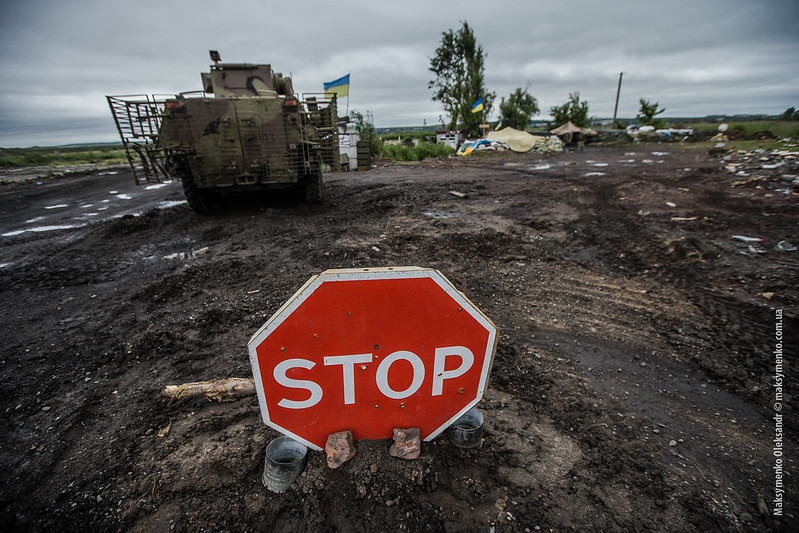
Dear Rethinking Schools friends,
Like you, we are angry and fearful about the Russian invasion of Ukraine. This is already causing immense suffering — which will only increase. These are terrifying times for our students. They have experienced so much death from the pandemic, from the police, from shootings in malls, parks, schools. It can seem like the world is on fire and there is no safe place. Add to this the profound threat of nuclear catastrophe that the Ukraine war could trigger, and the precariousness of this moment is hard to overstate.
Those of us who have been in the classroom during other times of invasion and war know how difficult it can be to try to help our students make sense of a conflict that we ourselves may not understand well. We are called on to be the instant experts that we are not. During these events, we have relied especially on the reporting of Amy Goodman, Juan González, and colleagues at Democracy Now!, which remains the finest daily newscast we know of. Their report on Wednesday, featuring Dr. Ira Helfand, immediate past president of the International Physicians for the Prevention of Nuclear War, is the kind of reporting we have not seen in the mainstream media. Democracy Now! is an essential classroom resource.
Through the decades, Phyllis Bennis of the Institute for Policy Studies is another analyst we have relied on to help frame our teaching about global events. Writing on the Ukraine invasion today in Foreign Policy in Focus, Bennis writes:
Our first concern must be for civilians across the country, now facing violence and displacement. And our first call must be for an immediate ceasefire, a pull-back of Russian troops from Ukraine, and international support for the humanitarian challenges already underway in the region.
As for resolving the conflict, that requires understanding its causes — which has everything to do with when we start the clock.
If we start the clock in February 2022, the main problem is Russia’s attack on Ukraine. If we start the clock in 1997, however, the main problem is Washington pushing NATO — the Cold War-era military alliance that includes the United States and most of Europe — to expand east, breaking an assurance the U.S. made to Russia after the Cold War.
Our teaching, too, should reflect on “when we start the clock.” We should remember, for example, that U.S. history is literally a history of invasion (and overthrow) — Indigenous lands in what became the United States, Mexico, the Philippines, Cuba, Puerto Rico, Haiti, Vietnam, Iran, Cambodia, Chile, Grenada, Panama, Afghanistan, Iraq … — and so the U.S. denunciation of the Russian invasion of Ukraine can be viewed more clearly with some historical context.
And we always turn to Howard Zinn to help us think clearly and critically about the meaning of war. See for example the Progressive magazine article Zinn wrote after the U.S. began bombing Afghanistan, following the Sept. 11 attacks — distinguishing between a just cause and a so-called just war.
We encourage Rethinking Schools readers to send us resources and strategies that you are using to help children — at all grade levels — to reflect on the war in Ukraine.
In the meantime, here are a few teaching thoughts. Rethinking Schools editor, Linda Christensen, writes:
I have been reading the picture book The Catman of Aleppo to our 5-year-old grandson, Mateo, recently. It is about the bombing and destruction of Aleppo, Syria, which it shows, but it is also about an ambulance driver named, Mohammad Alaa Aljaleel, who saved the abandoned cats of the city. (See the BBC video.) I thought about how I might teach today in my high school classes as well as younger students using this book or persona poetry. Although this assignment doesn’t explain the roots of the invasion or the history of Russia and Ukraine, it does get at the idea that in the midst of war and devastation, there are moments of solidarity and beauty. Reading the book, watching the video, a writing assignment might be to think about a time in your life when you faced difficulty, but found solidarity or beauty.
There is also power in looking at photographs and writing persona poetry from someone in the photos, boarding trains, seeing the smoke from their windows. (See “Other People’s Lives,” Christensen’s chapter about persona poetry in the book she edited with Dyan Watson, Rhythm and Resistance.)
Our book Teaching About the Wars does not explicitly include anything about Ukraine, but there are several pieces you might find helpful. (The book is available for free download at our website.) See for example, our editorial “Teaching in a Time of War.” In “Learning from the Past, Talking About the Present,” 4th-grade teacher Kelley Dawson Salas writes about the silence about the Gulf War in her own schooling to reflect on what she wanted to teach her students. Dr. Martin Luther King Jr.’s “A Revolution of Values,” is an excerpt from his longer speech denouncing the war in Vietnam, but is a broader meditation on war and its causes: “Now let us rededicate ourselves to the long and bitter—but beautiful—struggle for a new world.” In “Why Invade Iraq?” Rethinking Schools editor Bill Bigelow describes step-by-step how he helped his high school students read critically President George W. Bush’s speech justifying the 2003 invasion. A similar strategy might be used to help students read President Vladimir Putin’s speech justifying the invasion of Ukraine.
What is always true at times like this is that we need to remind ourselves that teaching is a collective enterprise. We need each other’s stories of how we are bringing the world into our classrooms. We need to create conversations — in our schools, our school districts, our professional organizations, our unions — to articulate our pedagogical choices.
As always, we appreciate your essential work.
Warmly,
Rethinking Schools
